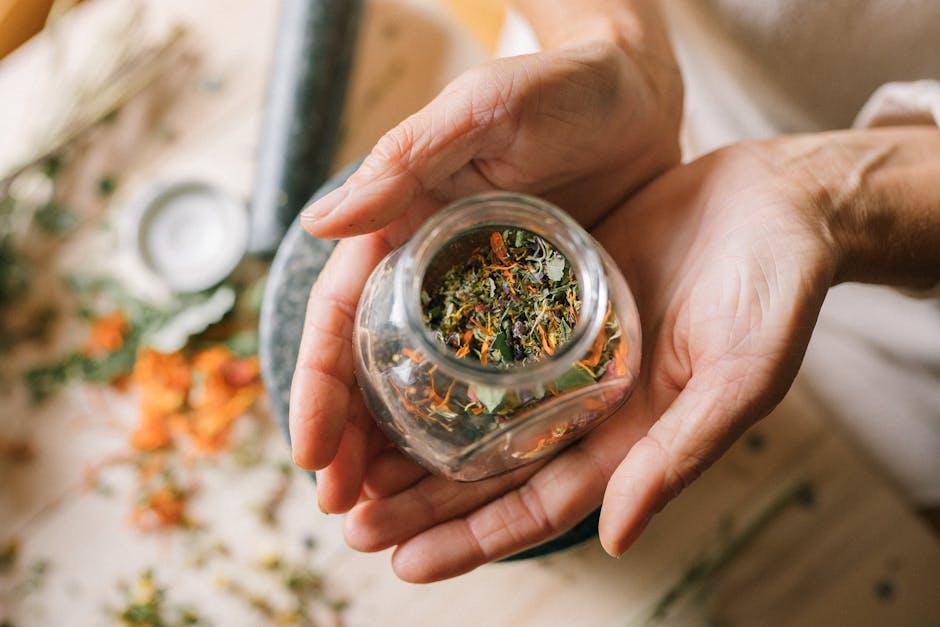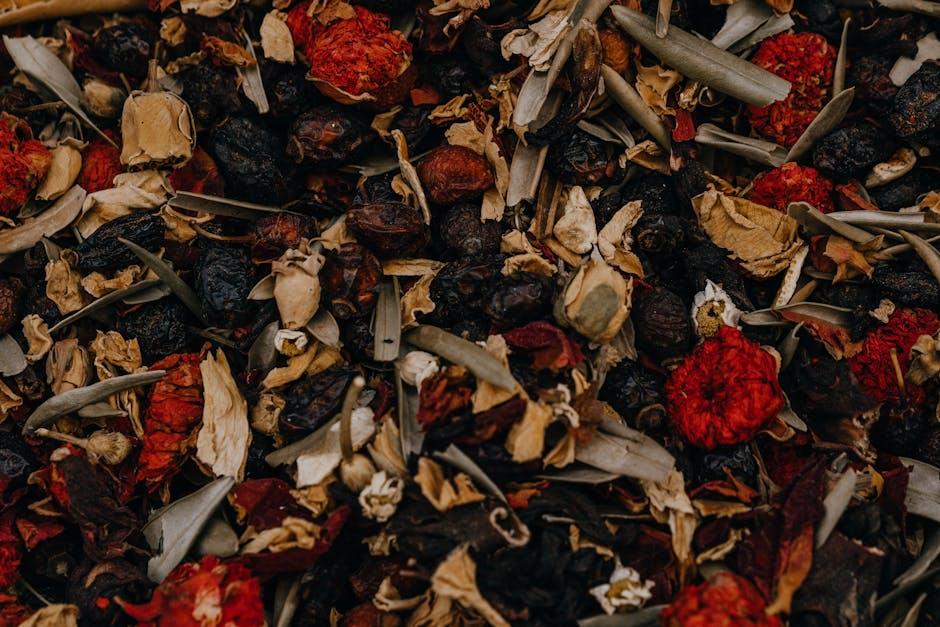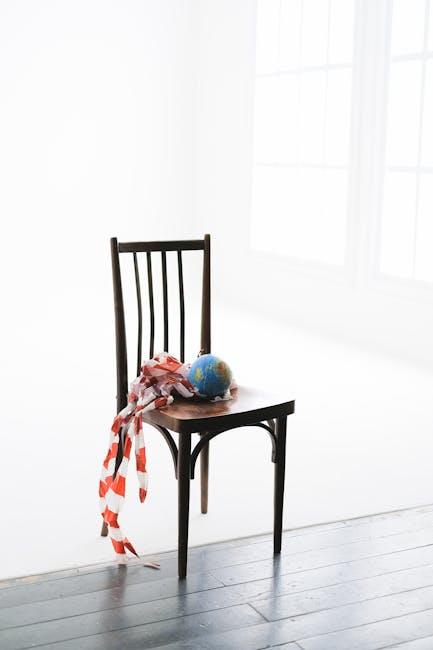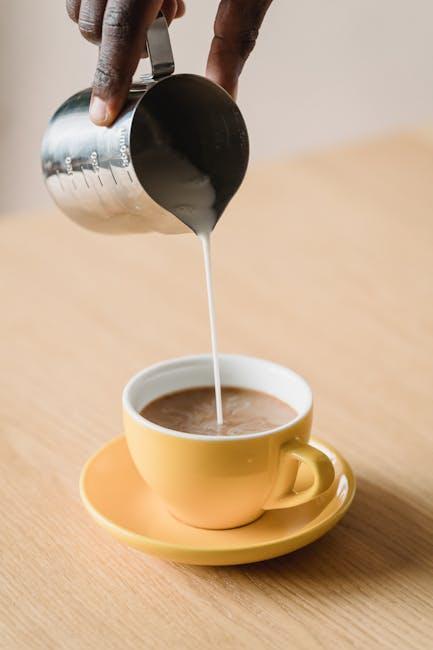There’s something timeless about the ritual of brewing tea-a quiet moment where nature’s bounty is transformed into a soothing cup of warmth. While the world of commercial teas offers endless variety, making your own herbal tea blends opens a door to endless creativity and personalized flavor. From refreshing mint and calming chamomile to invigorating ginger and fragrant lavender, the possibilities are as vast as the garden you cultivate or the markets you explore. In this article, we’ll delve into the art and science of crafting your own herbal tea blends, guiding you to combine herbs thoughtfully, understand their unique properties, and create a beverage that is truly your own. Whether you seek relaxation, rejuvenation, or a simple sensory delight, crafting your own herbal infusion is a rewarding journey worth savoring.
Choosing the Perfect Herbs for Your Herbal Tea Creations

When selecting herbs for your tea blends, think beyond flavor – consider therapeutic benefits and the aroma each herb brings. Start with a base herb that complements your desired effect, such as soothing chamomile for relaxation or invigorating peppermint for a midday boost. Pair these with accent herbs that add complexity, like a touch of spicy ginger or calming lavender. Keep in mind the intensity of each herb: some are bold and can overpower, while others are subtle and provide gentle undertones. Balance is key to crafting a harmonious blend that delights the senses and nurtures your well-being.
To simplify your selection process, here’s a quick guide outlining common herbs, their flavors, and effects, making it easier to mix and match:
| Herb | Flavor Profile | Effect |
|---|---|---|
| Chamomile | Sweet, apple-like | Soothing, calming |
| Peppermint | Minty, refreshing | Digestive aid, energizing |
| Rosemary | Herbaceous, piney | Stimulating, memory boost |
| Lavender | Floral, slightly sweet | Relaxing, reduces stress |
| Ginger | Spicy, warming | Anti-inflammatory, digestive |
Experiment with ratios and combinations, trusting your palate and intuition. Remember, the best herbal teas are personalized, reflecting your tastes and needs. Keep a tea journal to record your blends and tweak them until you find your perfect cup.
Balancing Flavors and Benefits for a Harmonious Blend

Mastering the art of crafting herbal tea blends lies in understanding how to balance both taste and wellness benefits. Combining herbs with contrasting flavors-like the earthiness of chamomile and the brightness of peppermint-creates a dynamic cup that delights the palate without overpowering. Keep in mind that some ingredients bring natural sweetness, like licorice root, while others may introduce bitterness or spice, such as dandelion root or ginger. This harmony not only enhances the drinking experience but also ensures that each sip carries a purposeful blend of healing properties.
To streamline your blending process, consider the complementary effects of your chosen herbs alongside their flavor profiles. The table below illustrates a few popular combinations to inspire your creativity:
| Herb Combo | Flavor Balance | Health Benefit |
|---|---|---|
| Lavender & Lemon Balm | Floral + Citrusy | Calming, Stress Relief |
| Rosehip & Hibiscus | Tart + Sweet | Rich in Vitamin C |
| Ginger & Turmeric | Spicy + Earthy | Anti-Inflammatory |
| Chamomile & Peppermint | Sweet + Fresh | Digestive Aid |
- Start simple: Use two or three herbs per blend for a more manageable and balanced flavor.
- Test your blend: Brew a small cup first to adjust ratios before making a larger batch.
- Note effects: Track how each blend affects your mood or health to customize future mixes.
Step-by-Step Guide to Blending and Storing Your Herbal Tea

Begin by selecting your favorite herbs and flowers-think chamomile for calm, peppermint for a refreshing kick, or hibiscus for a vibrant splash of color. Gently crush the leaves and petals using a mortar and pestle or simply pinch them between your fingers to release their natural aromas. Combine your ingredients thoughtfully to balance flavors and benefits, aiming for a harmonious blend rather than an overwhelming variety. Use an unpowered scale or measuring spoons to maintain consistent proportions, ensuring that each cup brewed tastes just as delightful as the last.
Once your blend is perfected, store it in an airtight container away from light and moisture to preserve its freshness and potency. Consider labeling your blends with the date and key ingredients to keep track of shelf life-most herbal teas stay fresh up to six months. Use glass jars or tins with tight-fitting lids for optimal storage. Below is a simple guide to help you choose the best container for your tea keepsakes:
| Container Type | Best For | Notes |
|---|---|---|
| Glass Jar | General storage | Non-reactive, keeps flavors pure |
| Metal Tin | Travel-ready blends | Durable, blocks light |
| Resealable Pouch | Small quantities | Space-saving, portable |
Tips for Brewing and Experimenting with Unique Herbal Infusions

Achieving the perfect herbal infusion is both an art and a science. Start by selecting fresh, high-quality herbs, as their potency and aroma define the brew’s character. Experiment with drying techniques-air-dried herbs retain subtle flavors, while oven-dried ones become more robust. When blending, consider balancing flavor profiles using a mix of floral, earthy, and spicy notes to create a multi-layered sensory experience. Don’t shy away from adding unexpected ingredients like dried citrus peels or crushed spices to awaken the palate. Remember, water temperature and steeping time are crucial; typically, delicate leaves require lower temperatures (around 160-180°F) and shorter steeping, while tougher roots and barks demand hotter water and longer infusion.
To keep your experimentation organized, use this simple guide:
| Herb Type | Ideal Water Temp. | Steeping Time | Taste Notes |
|---|---|---|---|
| Chamomile | 160-170°F | 5-7 mins | Light, floral, calming |
| Ginger Root | 212°F (boiling) | 10-15 mins | Spicy, warming, sharp |
| Lavender | 180°F | 5 mins | Floral, slightly sweet |
| Rose Hips | 212°F (boiling) | 7-10 mins | Fruity, tart, bright |
Embrace curiosity as you blend: start with small batches, record every detail, and adjust until your senses are satisfied. Keep in mind these tips for stunning infusions:
- Layer flavors by steeping delicate herbs separately, then combining.
- Use cold infusions to extract different nuances over hours or overnight.
- Store blends in airtight containers away from light to preserve freshness.
The Conclusion
As you embark on your journey of crafting personalized herbal tea blends, remember that the art lies as much in the process as in the final sip. Each leaf, flower, and herb you choose tells a story-of nature’s bounty, of tradition, and of your own unique palate. So, brew with curiosity, savor with intention, and let your blends become a fragrant extension of your creativity. After all, the perfect cup of tea is not just made; it’s discovered, one blend at a time.











